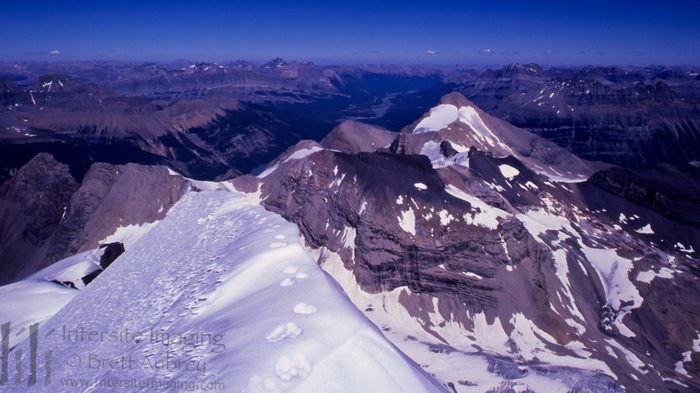There Are Only 300 Wolverines Left in the Lower 48. Why Won’t the Government Protect Them?
The Fish and Wildlife Service downplayed the threat of climate change and deferred to industry groups in a recent decision not to protect wolverines under the Endangered Species Act, according to two lawsuits.
Johnathan Hettinger Montana Free Press

Editor’s Note: This article was originally published by Montana Free Press.
Conservation groups filed a pair of lawsuits Monday challenging the U.S. Fish and Wildlife Service’s decision to deny federal Endangered Species Act protections for the wolverine.
The lawsuits argue that wolverines, a snow-dependent species with only 300 individuals living in the Lower 48, face imminent threats in the face of a warming climate, reduced snowpack and population isolation, and that the federal government downplayed those threats in its October decision to deny protections for the species.
The decision on whether to list the wolverine is decades in the making. Conservation groups first filed a petition outlining the species’ challenges in 2000. In 2013, the U.S. Fish and Wildlife Service proposed protecting the species as “threatened” under the Endangered Species Act, but agency officials reversed that decision in 2014. A lawsuit filed by the conservation groups challenged that decision, and in 2016 a federal judge ruled that the agency did not follow the best available science in determining that reversal.
“It’s disappointing that it is taking multiple lawsuits and many decades to get wolverines the protections they need,” said Andrea Zaccardi, a senior attorney with the Center for Biological Diversity, a plaintiff in one of the lawsuits along with Defenders of Wildlife, the Greater Yellowstone Coalition and six other groups.
The two lawsuits are likely to be consolidated, and are set to be heard by U.S. District Court Judge Donald Molloy in Missoula. Molloy is the same judge who sided with the conservation groups in 2016. Zaccardi said Molloy made it clear that wolverines need protections to help them deal with climate change and “the Fish and Wildlife Service pretty much ignored that.”
In October, the agency released a revised decision arguing that new science has determined that wolverines aren’t as likely to be affected by climate change as previously thought. That determination relied on new research about where wolverines den and are present in the Lower 48 states. Much of that new research was drawn from a 2018 species status assessment.
But that science was “cherry-picked” to support the federal government’s predetermined decision to not protect the species, the lawsuits allege. Evidence for that predetermination includes the agency’s assessment that the “foreseeable future” for wolverines extends to 2055, when many climate assessments go to 2100, and an assumption that female wolverines, which den almost exclusively in deep snow, will be able to adapt to diminished snowpack.

“All of the scientific papers are pointing in one direction, and that’s that wolverines are in a lot of trouble in the Lower 48,” said Matt Bishop, an attorney with the Western Environmental Law Center, which is representing WildEarth Guardians, Alliance for the Wild Rockies and other conservation groups.
That opinion was shared by peer reviewers of the federal species status assessment, according to the lawsuit filed by the Western Environmental Law Center. The peer review was shared with Montana Free Press.
“It appears that the authors have made an inference that climate change is insignificant to wolverines and are going to great lengths to dismiss inconvenient truths,” one peer reviewer wrote.
The reviewer also wrote that the federal agency’s document “cherry picked” and “misconstrued” many scientific papers to reach conclusions that weren’t supported by the referenced papers.
The agency’s decision also claimed that wolverines in the Lower 48 are not distinct from a much larger and more robust Canadian population, a reversal from earlier federal discussions about the species. If Lower 48 wolverines are considered part of the Canadian population, “they don’t look imperiled in the same way,” said Lindsay Larris, wildlife program director for WildEarth Guardians.
But 2019 studies that weren’t included in the 2018 species status assessment found the two populations to be significantly separated, both by the Trans-Canada Highway and by significant trapping activity at the U.S.-Canada border. The most recent estimate of the “effective population” — i.e., the population that contributes to breeding and the genetic diversity of the species — is 35 individuals in the Lower 48 states.
Another significant issue with the 2018 species status assessment is who was — and who wasn’t — invited to submit comments, Bishop said.
Bishop said his clients “tried forever” to get involved in the formulation of the document, and had to file a Freedom of Information Act request to even see it.
That FOIA request also revealed that industry groups including the American Petroleum Institute, the International Snowmobile Manufacturers Association, the Western Energy Alliance and the Utility Air Regulatory Group were given early access to documents and invited to submit comments, Bishop said. All of those groups, which represent fossil fuel and recreation interests that could be impacted by regulatory protections for the species, objected to wolverine protections, according to the complaint.
Bishop said he’s never seen such a “one-sided” consultation, in which the Trump administration reached out to industry groups for input, but not conservation groups or wolverine biologists.
Larris said WildEarth Guardians tried to get involved, but was stonewalled.
“It was clear [the Fish and Wildlife Service] was protecting certain interest groups, and the conservation community at large was not one of those interest groups,” Larris said.
Johnathan Hettinger is a journalist based in Central Illinois, where he grew up. A graduate of the University of Illinois, he has worked at the Midwest Center for Investigative Reporting, the Livingston Enterprise and the (Champaign-Urbana) News-Gazette. Contact Johnathan at jhett93@gmail.com and follow him on Twitter @jhett93.







